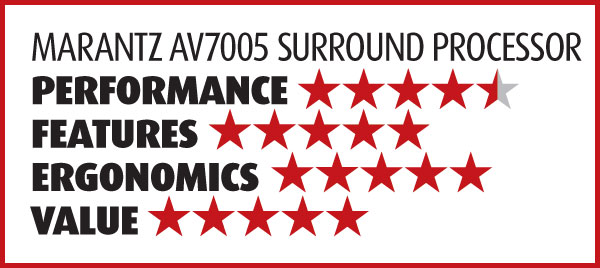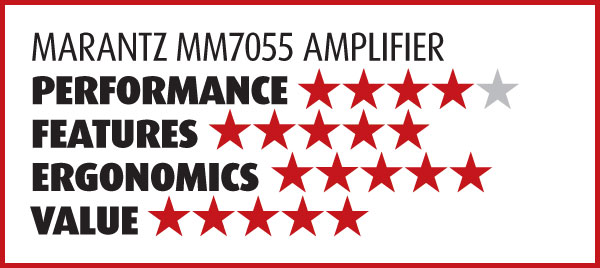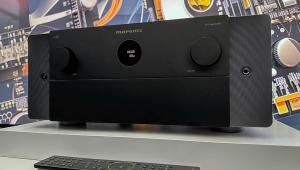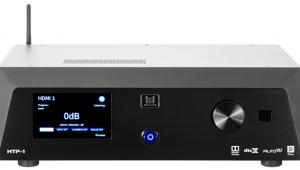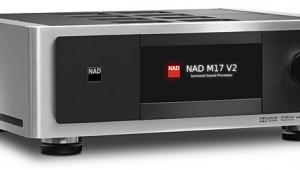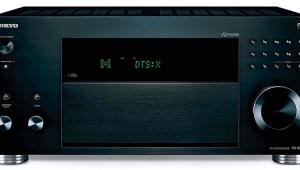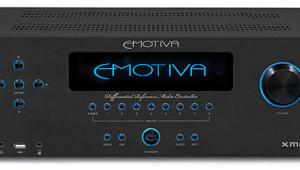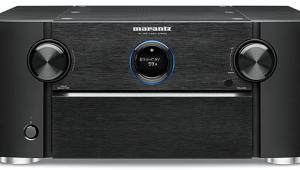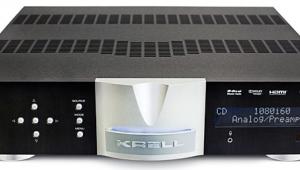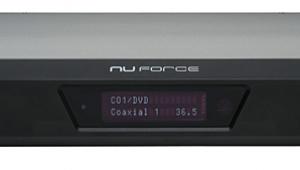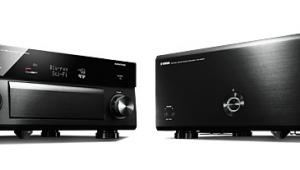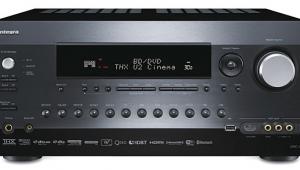Marantz AV7005 Surround Processor and MM7055 Amplifier Page 4
How sold am I on the AV7005? I’m buying one. If you’ve got a powerful legacy AVR with amplifier inputs, why dump it and start over when for $1,500 you can modernize it with the versatile, full-featured, fine-sounding AV7005? I don’t understand how Marantz does it for the price.
The MM7055 Five-Channel Power Amplifier
The second part of this new Marantz package is the equally handsome five-channel MM7055 amplifier ($1,200). It’s rated at 140 watts per channel into 8 ohms and 170 into 6 ohms, but the specs are for two channels driven. Marantz doesn’t provide specs for all channels driven, which is a more useful surround sound spec. Still, some people would argue that all channels are rarely called upon to perform full blast.
This amp incorporates the same current feedback discrete circuitry that Marantz uses in its superb-sounding $3,999 SM-11S1 stereo power amplifier that I reviewed for Stereophile in 2008. It produces plenty of power at another price that’s difficult to believe.
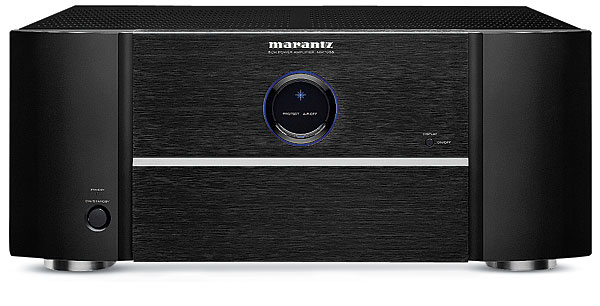
During most of my testing, I paired the AV7005 with my reference Parasound Halo A 51 fully balanced THX Ultra2– certified power amplifier designed by John Curl. It outputs 200 watts per channel into 8 ohms and 400 into 4 ohms, all channels driven. It’s a beautifully built monster that costs $4,499, and it’s well worth the money. But that’s almost twice the price of this Marantz combo.
The MM7055 is neither as powerful as the Parasound, nor does it appear to have the damping factor that the Parasound can deliver. Not surprisingly, it didn’t grip the woofers in my Sonics by Joachim Gerhard (now Spiral Groove) Amerigo speakers as well as the Parasound. The bottom-end response wasn’t as deep, tight, or muscular. It also didn’t produce the deadly silent backgrounds out of which came more propulsive, dynamic music and sharper, cleaner high-frequency transients.
Just before I returned the HALO A 51 to the system, I played a variety of SACDs and Blu-ray concerts like Scorsese’s Shine a Light Stones concert and Jeff Beck’s Performing This Week...Live at Ronnie Scott’s. The MM7055’s sonic performance was plenty good on everything, and the Marantz never ran out of gas at the levels I was listening. But when I returned the HALO A 51 to the system, it produced a visceral improvement.
On the Waltz for Debby SACD, the increased background blackness and additional bass grip paired with increased image three-dimensionality and a noticeably deeper soundstage. Scott LaFaro’s bass had noticeably better body and drive. There was a greater sense of a double bass and less of a sense of just bass. Cymbal shimmer was sharper, cleaner, and more metallic, and the attack of Bill Evans’ piano was far more convincing, with greater sustain and more convincing decay.
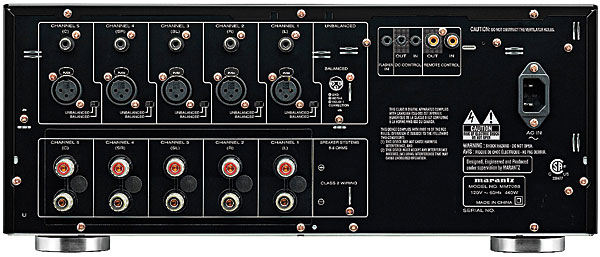
The Marantz amp suggested the Village Vanguard audience’s chatter, but at the same SPL, the HALO A 51 let you in on the details the way my two-channel rig does. You don’t have to be an audiophile to notice these things, but you might need to be one to care.
One thing is for sure: While the MM7055 was in the system, the sound of my home theater was somewhat diminished tonally, rhythmically, and especially in terms of those black backgrounds. Still, I’d rather listen to this amp than any Class D amp I’ve ever heard, regardless of power. The MM7055 shaved the edges off of every performance parameter I can think of. But with such surgical subtractive precision, you’re not likely to notice it unless you compare it to an amplifier that’s far more powerful and expensive. Its musical heart was in the right place and at a price that can’t be beat.
Conclusion
Everybody’s been burned by the shifting hot sands of home theater technological change. Spending a lot of money on the latest state-of-the-art surround processor or AVR (like the $8,000 Lexicon AV-8 I once bought) only to have it become obsolete a few years later is a mistake I’ll never make again. The Marantz AV7005 offers preemptive state-of-the-art features, impressive ergonomics, inviting sonic performance, and even good looks. Any video processing issues that may show up in the Video Test Bench weren’t visible in my viewing. I didn’t notice any degradation even when I compared over-the-air content against cable content passed through the receiver. For $1,500, you can’t go wrong. The AV7005 is flat out brilliant. The MM7055 offers excellent value for the money. Together, for $2,700, they get you near the top of the performance heap for a low price that was unimaginable just a few years ago.
